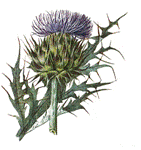Papers in the Biological Sciences

Svata M. Louda Publications
Document Type
Article
Date of this Version
1984
Abstract
The impact of a native, leaf-feeding chrysomelid beetle (Phaedon sp. nr. oviformis) on bittercress (Cardamine cordifolia: Cruciferae), was evaluated in an exclusion experiment. Multivariate statistical analysis showed a significant increase in plant performance in the rotenone exclusion compared to performance in the paired control treatment. Plant response to the reduction of herbivory was a complicated, interrelated syndrome of changes. When insects were excluded, the amount of missing leaf area decreased significantly (3.6-fold; 3.2-0.9 cm2 per plant), and the total leaf area increased 5.7-fold (12.9-73.4 cm2 per plant). Plant height (5.7-20.3 cm) and fruit production (0.1- 3.9 siliques per plant) also increased significantly when the number of insects was reduced. Furthermore, the 570% expansion in leaf area due to the exclusion of insects involved significant increases both in the initiation of new leaves and in the survival of mature leaves. Nevertheless, insect herbivory at a level well below complete defoliation (25% of the leaf area) changed leaf demography (both phenology and dynamics) and reduced plant performance by decreasing the plant stature, leaf area, and fruit production of this native forb. Thus, further experimental assessment is necessary before generalizations can be made regarding the effects of herbivory on plant dynamics.


Comments
Published in Ecology, 65(5), 1984, pp. 1379-1386. Copyright 1984 by the Ecological Society of America. Used by permission.